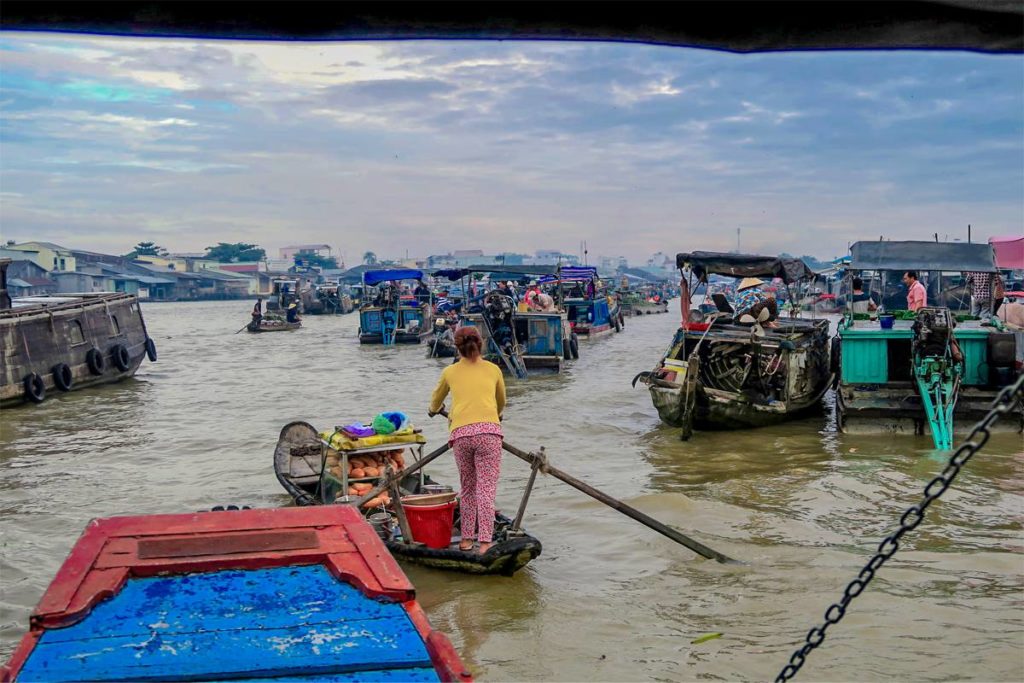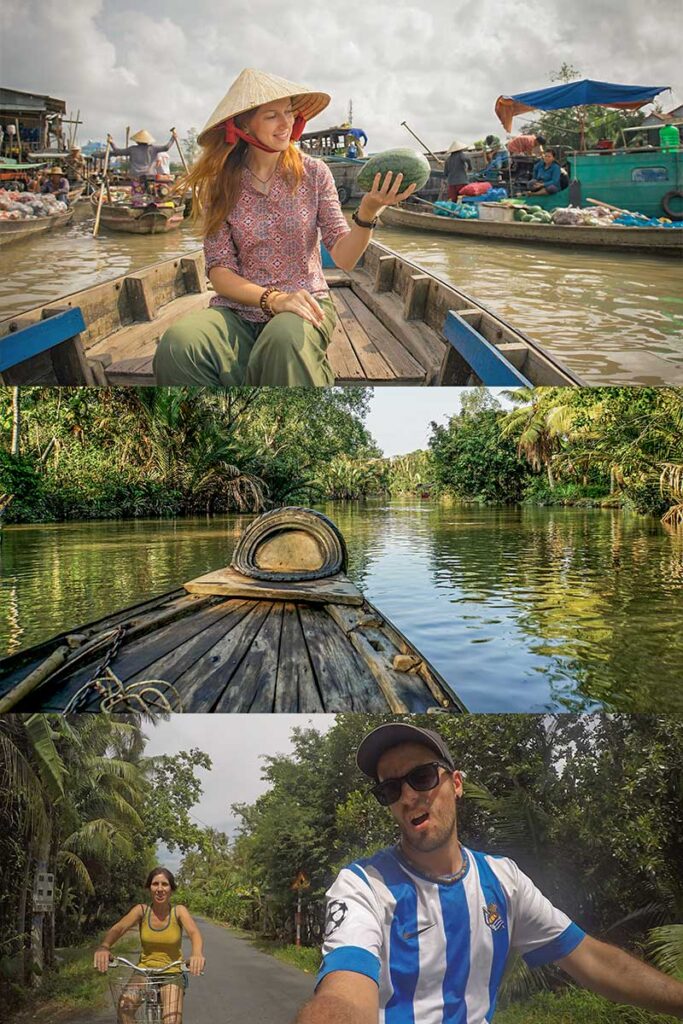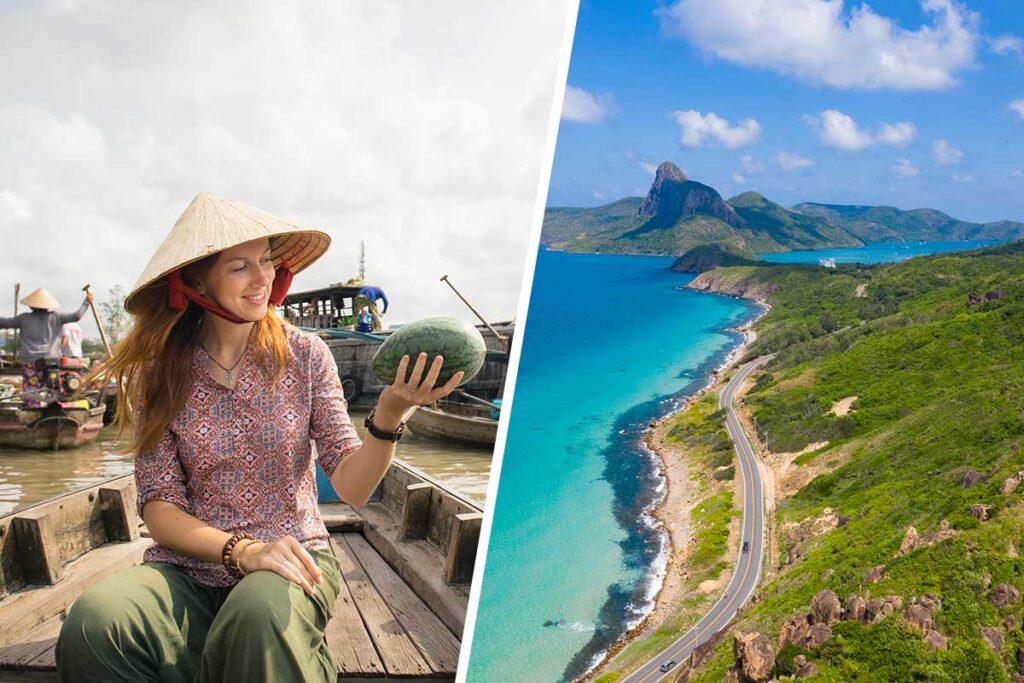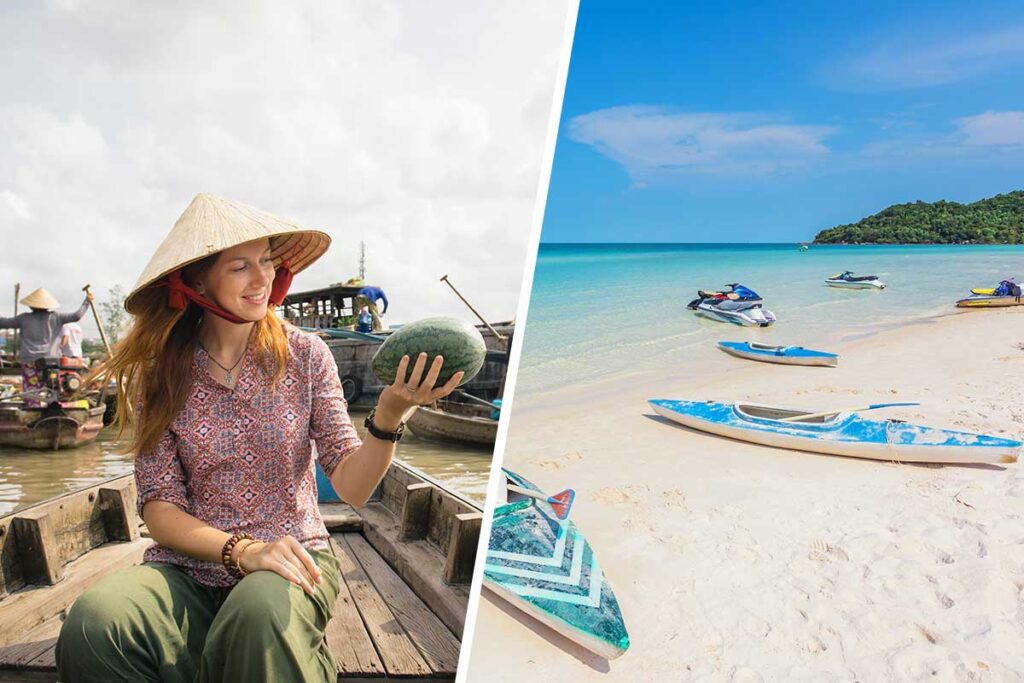What is Cai Rang Floating Market?
Cai Rang Floating Market is one of the few remaining wholesale markets on the waterways of the Mekong Delta. For generations, people here have bought and sold directly from their boats, using the river as both highway and marketplace. Farmers bring in loads of fruit, vegetables, and other produce from orchards and fields, while traders buy in bulk to resell in towns and cities.
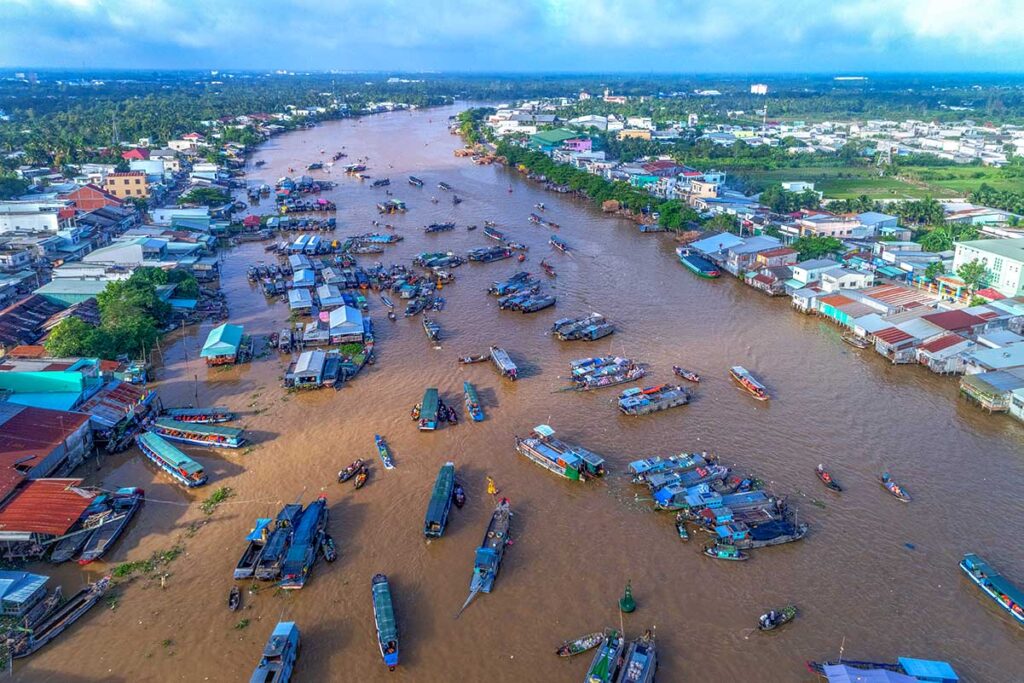
The market is located in Cai Rang District, about 6–7 kilometers from the center of Can Tho City. You can only reach it by boat, usually starting from Ninh Kieu Wharf or from homestays along the canals. Today, Cai Rang has become both a cultural icon and a tourist attraction. While fewer wholesale traders rely on it compared to the past, it still offers a glimpse into the river-based lifestyle of the Mekong Delta. Visitors come not just to see boats piled high with pineapples or melons, but also to experience breakfast on the water, meet locals who live on their boats, and get a sense of how commerce and daily life once revolved almost entirely around the river.
History of Cai Rang Floating Market
Cai Rang Floating Market began in the early 20th century, at a time when rivers and canals were the only practical transport routes in the Mekong Delta. With no bridges or paved roads, farmers loaded their rice, fruits, and vegetables directly onto boats and navigated to junctions where waterways met. These natural crossroads quickly grew into trading hubs, with Cai Rang becoming one of the busiest.
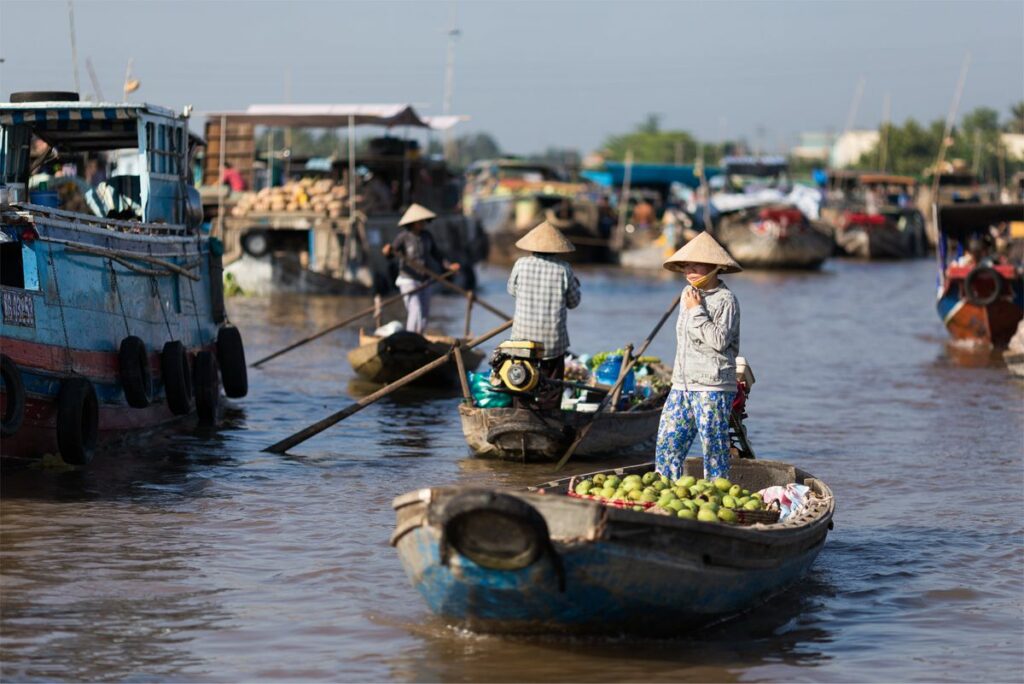
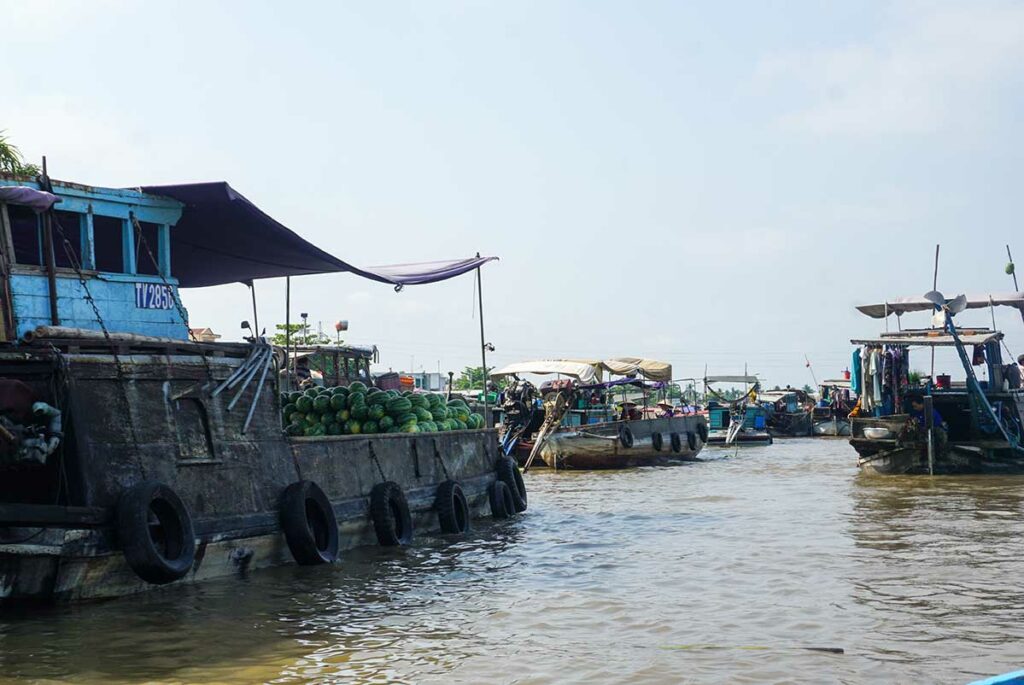
The market developed into a wholesale center, where large boats arrived loaded with produce from orchards and rice fields. Smaller boats came alongside to buy in bulk and then redistributed goods to villages, towns, and even Ho Chi Minh City. To make trading more efficient, sellers used a simple but ingenious system called “beo hang”: hanging a sample of their goods (such as a pineapple or pumpkin) on a tall bamboo pole so buyers could easily spot what each boat was selling from a distance.
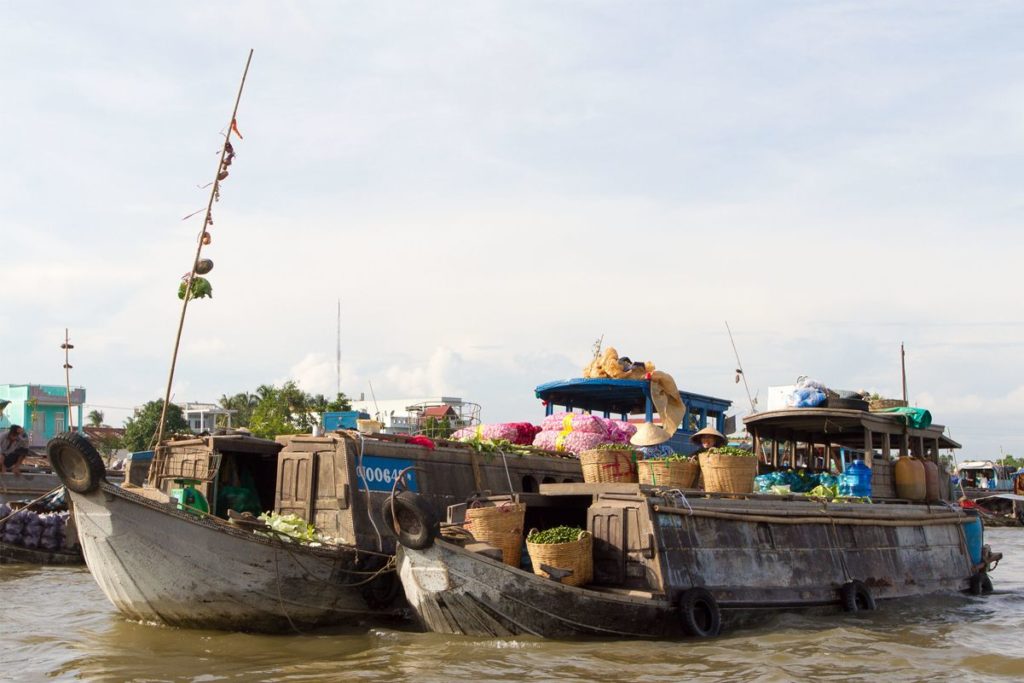
For decades, Cai Rang was essential to the food supply chain of southern Vietnam. Even as roads and trucks replaced boats for most wholesale trade, the market remained a symbol of the Mekong Delta’s river culture and a place where generations of boat families lived and worked.
The reality: Cai Rang today
Cai Rang is still the largest floating market left in the Mekong Delta, but it’s a fraction of what it used to be. Decades ago, hundreds of wholesale boats crowded the river every morning, moving fruit and rice across the region. Today, road and bridge development has made land transport faster and cheaper, so much of that trade has shifted away from the water.
What remains is a market with a split identity. A handful of bigger boats still sell produce in bulk, but the majority of activity now revolves around tourism. Small sampans weave through the crowds selling bowls of noodles, coffee, or fruit more to visitors than to traders. The atmosphere is lively, but in a different way than in the past: you’re just as likely to see boats full of tourists in life jackets as you are genuine buyers and sellers.
That doesn’t mean it’s not worth seeing. For many travelers, the sunrise boat ride, breakfast on the river, and glimpses of families living aboard their boats are memorable. But it’s important to go with realistic expectations—Cai Rang is no longer a purely authentic wholesale market. Local authorities are trying to preserve it as part of the region’s cultural heritage, with plans for better management and support for boat traders, but its character today is as much about visitors as it is about trade.
What can you see at Cai Rang Floating Market?
A visit to Cai Rang Floating Market is less about shopping and more about observing the rhythms of river life. From trading boats stacked high with produce to sampans cooking breakfast on the water, there are still plenty of memorable moments if you know what to look for.
1. The busy trading scene
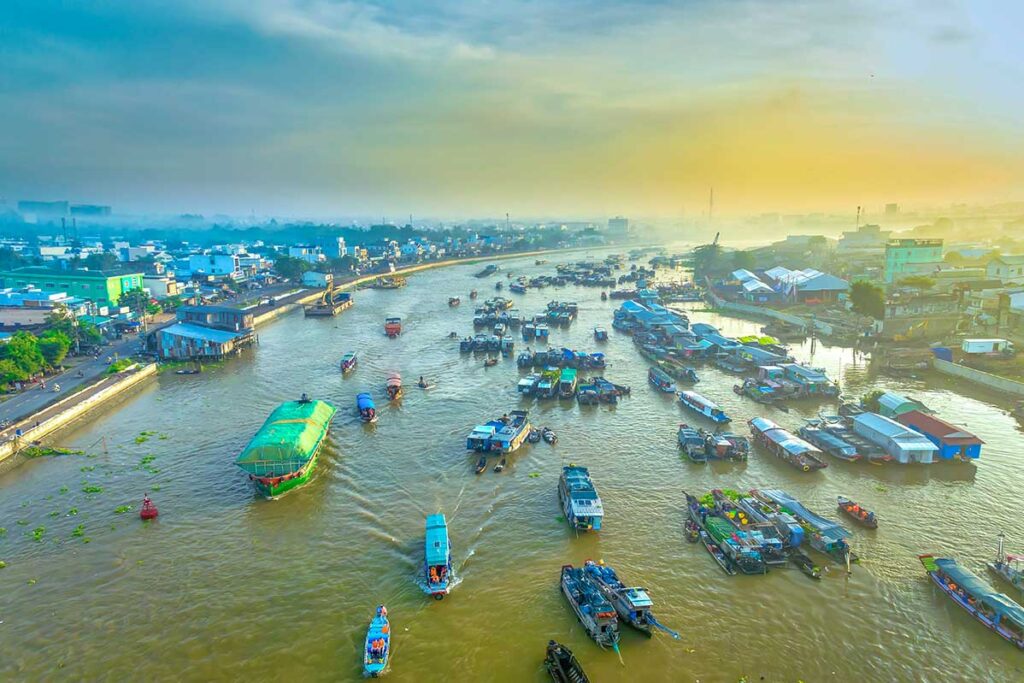
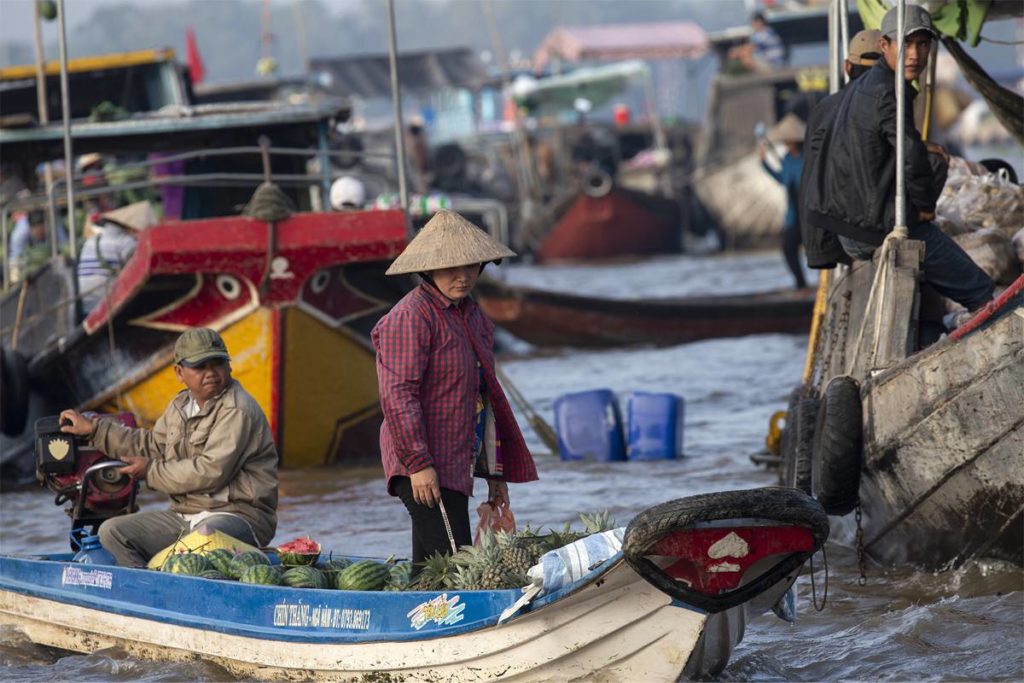
Even though it’s quieter than in the past, you’ll still see large wooden boats anchored in the middle of the river, selling fruit and vegetables in bulk. Smaller boats pull alongside to buy and resell elsewhere, while tourist boats thread through the action. It can look chaotic at first, but there’s an impressive flow and skill to how the boats move and trade without collisions.
2. Fruit and produce
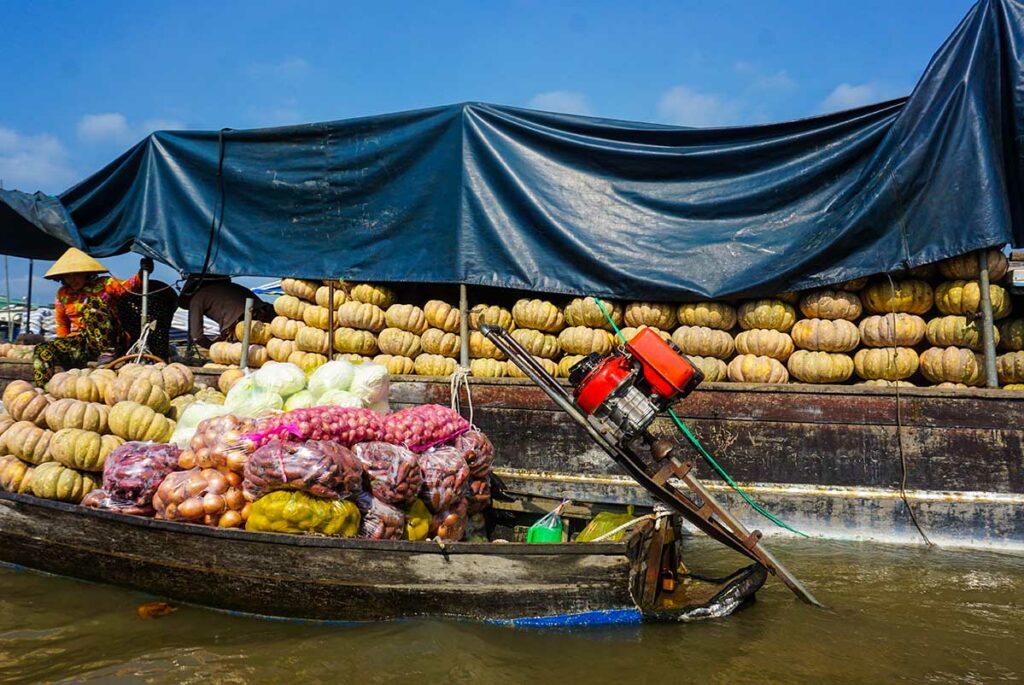
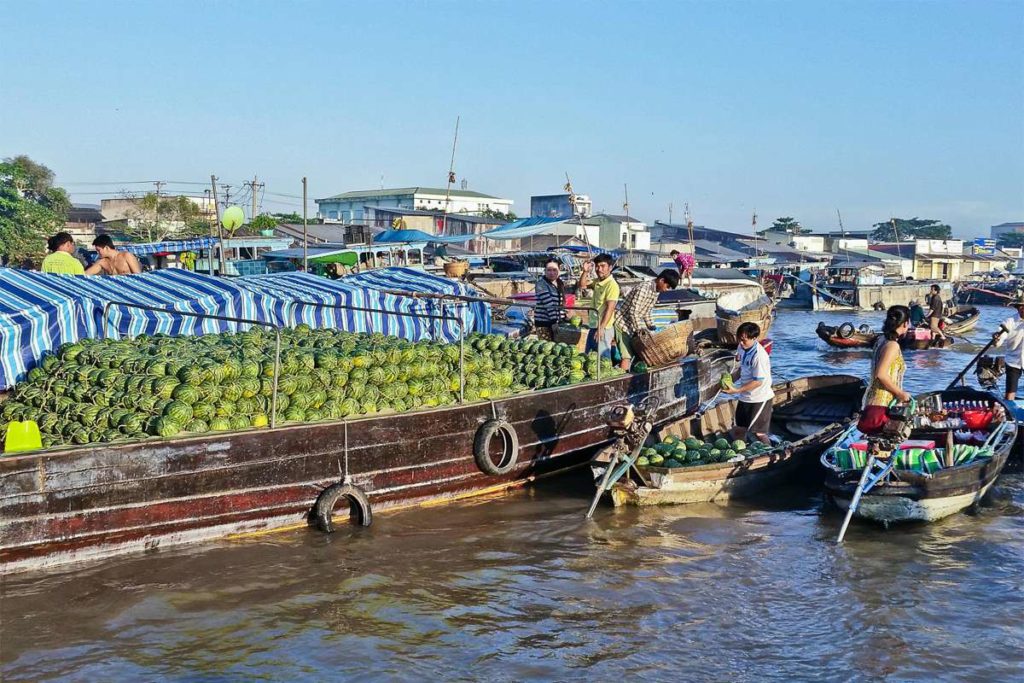
The Mekong Delta is Vietnam’s “fruit basket,” and Cai Rang reflects that. Expect to see boats stacked with pineapples, watermelons, jackfruit, rambutan, pomelos, and the occasional durian. Some boats sell directly to tourists in smaller quantities, so you may be able to buy a pineapple or taste tropical fruit straight from the source.
3. Breakfast on the water
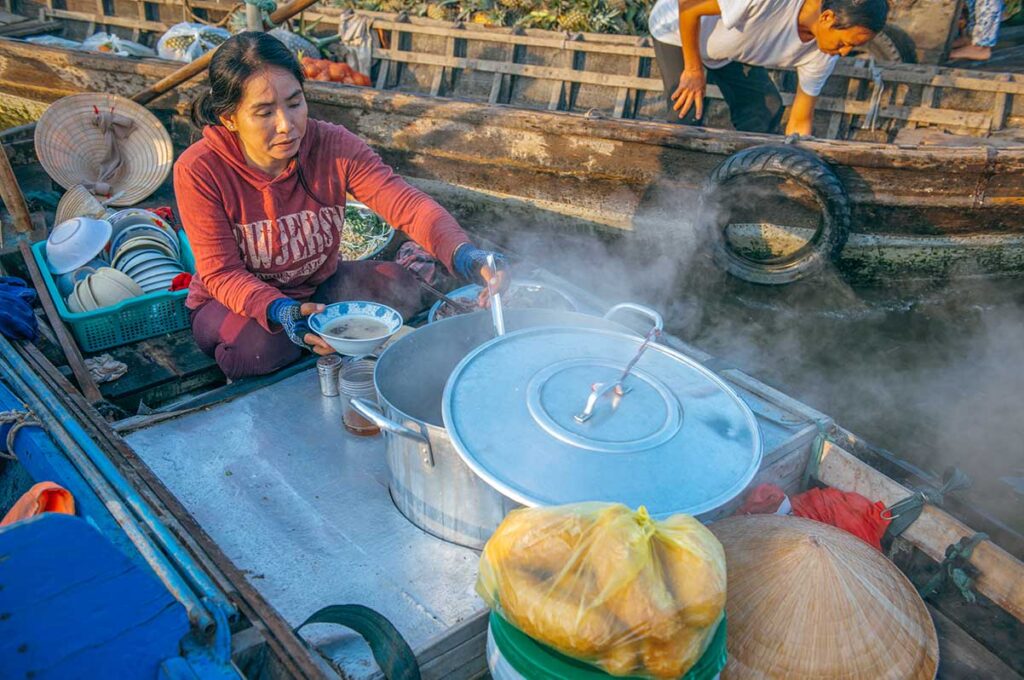
One of the highlights is grabbing breakfast from a floating “kitchen.” Tiny sampans carry pots of steaming broth, plastic bowls, and gas stoves, serving dishes like pho, hu tieu (pork noodle soup), or even a quick bánh mì. Prices are usually around 25,000 VND (about $1 USD). Pair it with a strong Vietnamese coffee served from another boat, and you’ve got one of the most atmospheric breakfasts in Vietnam.
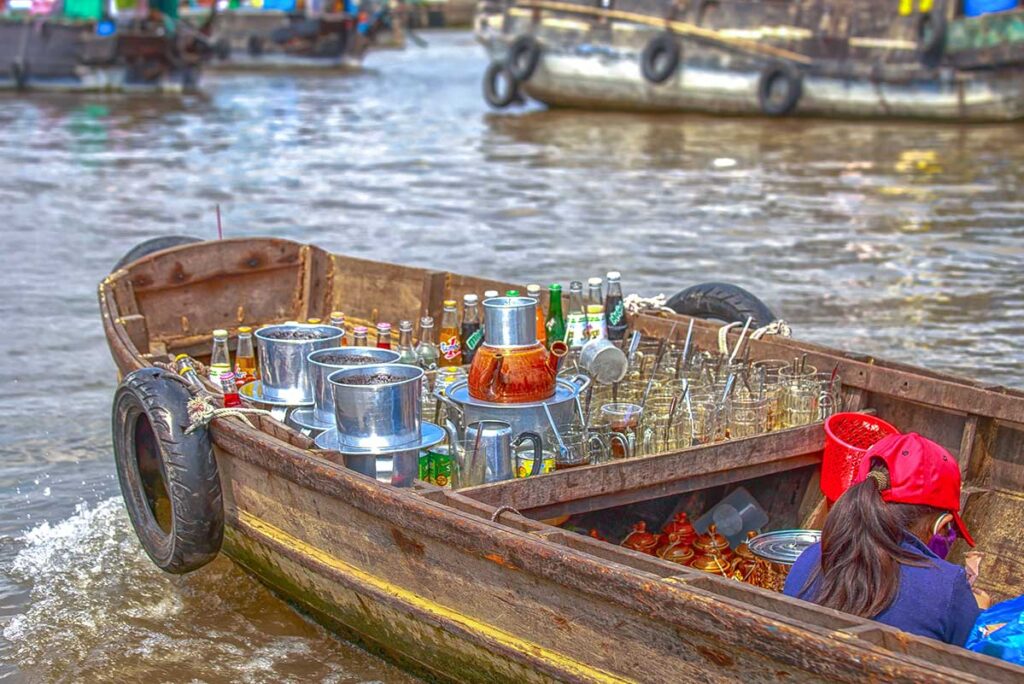
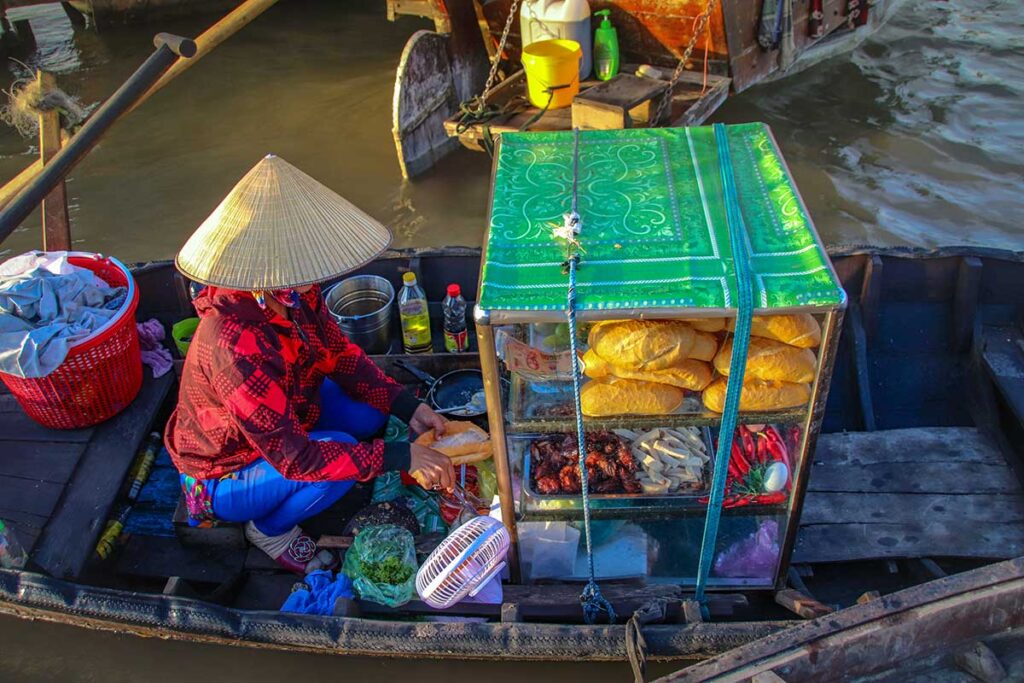
Chef Gordon Ramsay also stopped by a hu tieu stall at Cai Rang and called that bowl “a stunning, delicious slow-cooked Vietnamese pork noodle soup,” describing it as “the greatest dish I’ve ever had.” His praise even made the hu tieu a challenge on MasterChef US (see the episode here).
4. The advertising poles
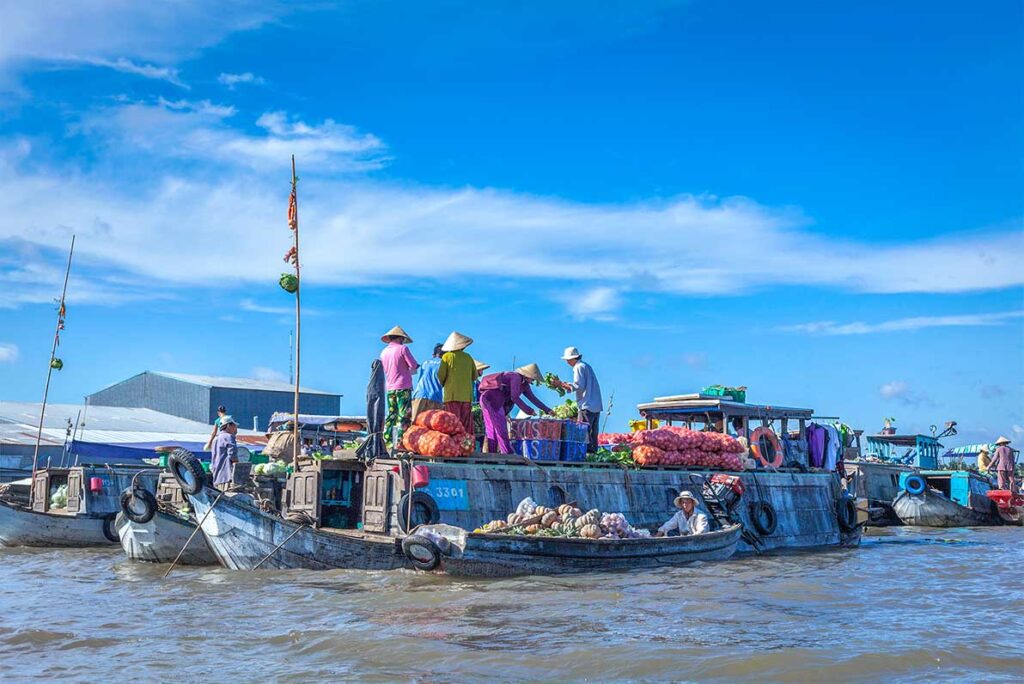
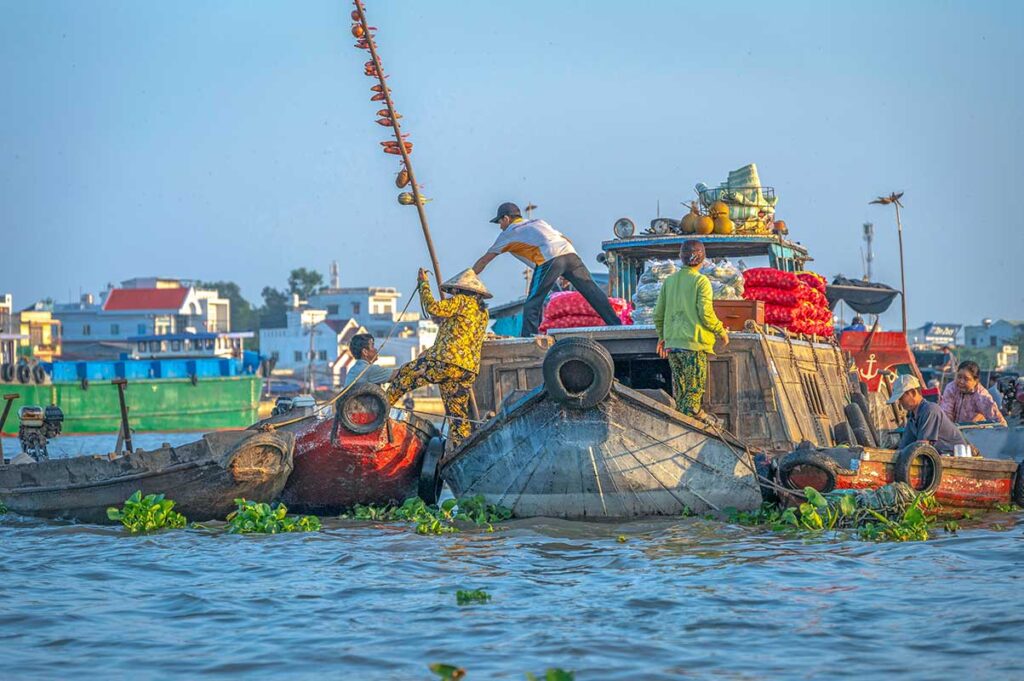
Look for tall bamboo poles rising above the boats with fruit or vegetables tied to the top. This is the traditional “beo hang” system—a way to show what’s being sold without shouting over the noise of boat engines. It’s a simple but ingenious tradition that has become one of the market’s most iconic features.
5. Glimpses of river life
Many families live permanently on their boats, and a morning at Cai Rang gives a window into this lifestyle. You might spot children brushing their teeth at the edge of a deck, laundry hanging from bamboo poles, or a motorbike parked on a larger boat. These small details give a more authentic sense of life along the waterways.
6. Weekend folk music performances
On weekends, you may come across boats with musicians performing Đờn ca tài tử, the traditional folk music of southern Vietnam. Recognized by UNESCO, this style of music reflects the spirit and daily life of the Mekong Delta. It adds a cultural touch to the market atmosphere, though it is clearly aimed at entertaining visitors rather than the traders themselves.
How to get there & Arrange a boat
Cai Rang Floating Market is only accessible by water, so every visit starts with a boat ride. The experience you have will partly depend on where you stay and how you choose to arrange your trip.
Can Tho – gateway city
The market is about 6–7 km from downtown Can Tho, the largest city in the Mekong Delta. From Ho Chi Minh City, Can Tho is a 3.5–4.5 hour drive (roughly 170 km). The easiest way is by bus or private transfer. Can Tho also has an airport with domestic flights from Hanoi, Da Nang, and Phu Quoc, which can save time if you’re traveling across the country. To see Cai Rang in the early morning, you’ll need to spend the night in Can Tho or at a nearby homestay.
Boat departure points
- Ninh Kieu Wharf (downtown Can Tho): The most popular starting point, with dozens of operators offering morning tours. Easy to arrange on the spot, but tends to be busier and more touristy.
- Homestays along the canals: Many rural homestays outside the city have their own boats, so you can step right from your accommodation onto the river. This option often feels quieter and more authentic.
- Pre-booked tours: Travel agencies and hotels can arrange boat trips in advance, often combining Cai Rang with other stops like fruit orchards or rice noodle workshops.
Private vs. shared boats
- Private boats give you flexibility on timing and stops. Prices are usually higher (around 500,000–700,000 VND for a small group), but you can set your own pace.
- Shared boats are cheaper (around 100,000–150,000 VND per person) and depart once enough travelers have gathered, usually after 7 AM. They’re good value but less personal, and you may spend extra time waiting.
Booking a tour
If you want to make the most of your trip, you can book a multi-day Mekong Delta tour starting from Ho Chi Minh City. These tours don’t just cover Cai Rang Floating Market, but combine it with cycling through the countryside, visits to orchards, cooking classes, or exploring smaller canals, which makes the journey far more worthwhile than a quick market stop. You can choose between private tours, which are flexible and tailored to your pace, or small group tours, which are less personal but a good fit if you’re on a budget. Both options include transfers and an overnight stay in Can Tho or a rural homestay, so everything is arranged for you without having to worry about logistics.
Tip 1: Check out our private tour that combines a stay in a local countryside homestay with Cai Rang and Phong Dien floating markets, cycling through rural villages, and visits to fruit orchards:
The Real Mekong Delta Homestay Experience & Floating Markets Tour
- Experience Homestay in Can Tho with cycling through villages and rice fields.
- Highlights Cai Rang & Phong Dien floating markets with early-morning boat trip.
Tip 2: Interested in also going to Phu Quoc or Con Dao? We offer seamless packages that include the same Can Tho homestay and floating market experience, plus transfers to the port and speed ferry directly to your chosen hotel on the island:
How a typical boat tour looks
Most boat trips in Can Tho include more than just Cai Rang Floating Market. In fact, it’s better that way—Cai Rang alone can feel underwhelming if you expect hours of action. Tours usually combine the market with smaller sights and quiet stretches of river, giving you a broader picture of Mekong Delta life. Here’s what a half-day or morning tour often looks like:
- Early morning departure: Boats usually set off around 5:30–6:00 AM to catch the market at its liveliest and enjoy the sunrise on the river.
- Cai Rang Floating Market: The main stop, where you’ll see trading boats, breakfast sampans, and the classic advertising poles. Depending on your guide and boat type, you might stop alongside a trader to try fruit or buy a quick snack.
- Phong Dien Floating Market (optional): Some tours also include Phong Dien, a much smaller and more local market that operates earlier (best before 6:30 AM). It’s less touristy but harder to time, so only certain itineraries manage both.
- Rice paper workshops: A common stop where you can watch thin sheets of rice paper being steamed and dried in the sun, often on woven bamboo racks. These are later used for spring rolls or other dishes.
- Fruit orchards or cacao farms: Many tours add a land stop to wander through an orchard, taste seasonal fruit, or visit a small cacao farm where beans are fermented and processed. These stops are clearly geared toward visitors, but they add variety to the trip.
- Cruising through small canals: Perhaps the most atmospheric part of the journey—after the bustle of the market, your boat winds through shaded backwaters lined with palm trees and stilt houses. This slower stretch often leaves the strongest impression.
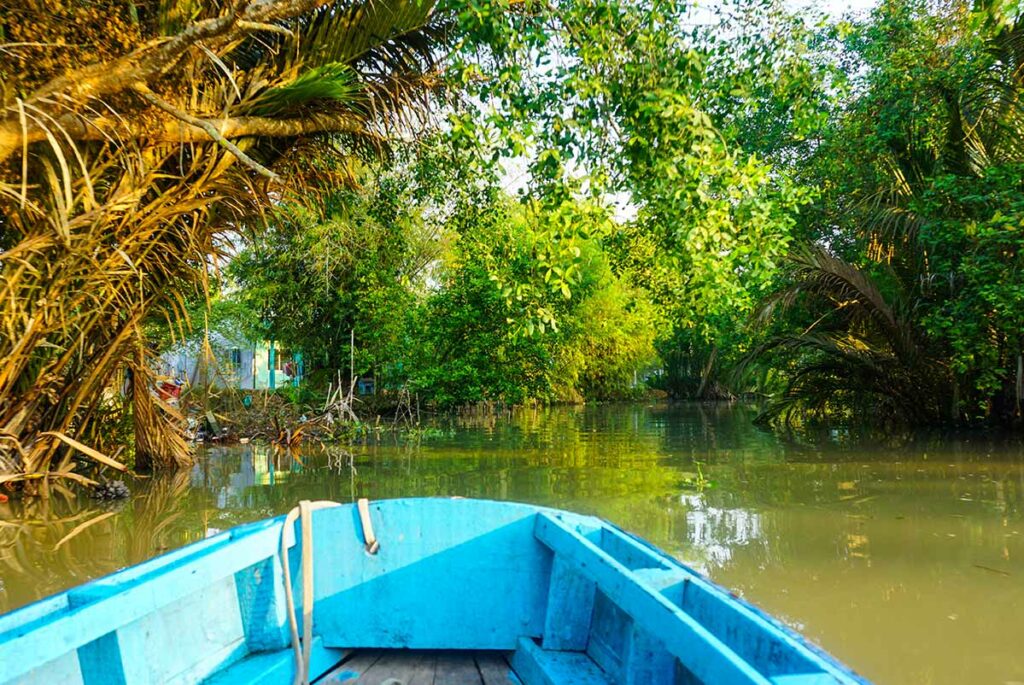
A typical tour takes around 3–4 hours, but longer versions can fill most of the day. If you have the time, choosing one that goes beyond Cai Rang will give you a much richer and more balanced experience.
Practical information & Travel tips
A visit to Cai Rang Floating Market is fairly straightforward, but a few practical points will make the experience smoother and more enjoyable.
Not possible as a day trip from Ho Chi Minh City
The market is at its busiest around dawn, which makes a same-day trip from Ho Chi Minh City impractical. Even with a private car, the drive takes 3.5–4.5 hours, so you’d arrive too late. The only realistic way to see Cai Rang properly is to spend at least one night in or around Can Tho.
Best visiting times
Boats start arriving around 4:30 AM, with peak activity between 5:00 and 7:00 AM. By 8:00 AM, the market is already winding down, especially on quieter days. Aim to be on the water at sunrise, when the light is beautiful and temperatures are still comfortable.
Where to stay
- Can Tho city: The easiest option, with a range of hotels near Ninh Kieu Wharf, making early morning departures simple.
- Countryside homestays (recommended): A more local and authentic experience. Many homestays are located right on small canals and can arrange boats to pick you up directly from the property. It’s quieter, more rural, and gives you a better sense of what Mekong life is really like—something you miss if you only stay in the city. Despite what many guides suggest, you don’t need to stay in central Can Tho to visit Cai Rang Floating Market.
Weather preparation
You’ll usually board the boat while it’s still dark, which makes it easy to forget sun protection. Once the sun rises, there’s little shade on the river and most boats don’t have a roof. Bring sunscreen, sunglasses, and a hat, even if it doesn’t feel necessary at the start. In the rainy season (May–October), pack a light raincoat or umbrella for sudden showers. Light, breathable clothing is best for the year-round humidity.
What to bring
- Cash: Vendors don’t take cards, and you’ll need small bills for breakfast, fruit, or tipping the boat driver (optional).
- Camera or phone: The morning light on the river is fantastic for photos.
- Sunscreen, hat, rain protection: Don’t underestimate the sun after sunrise.
- Drinking water: You’ll likely be out for several hours.
Other things to do in Can Tho
If you’re already in Can Tho, it’s worth planning more than just the market. Options include:
- Pagodas and temples such as Ong Pagoda and Munirangsyaram Pagoda.
- Cycling through quiet rural roads and villages outside the city.
- Bird parks like Bang Lang Stork Sanctuary or nearby reserves.
- Local food: Can Tho is known for its river fish, bánh xèo (crispy pancakes), and lively street food markets.
For more detailed suggestions, check out our full Can Tho travel guide with tips on what to see and do in the area.
Is Cai Rang Floating Market worth visiting?
Cai Rang is no longer the bustling wholesale hub it once was. The number of trading boats has dropped sharply, and on some mornings there seem to be more tourist boats than local sellers. For that reason, some travelers find it underwhelming, especially if they expect the dramatic scenes shown in older photos.
That said, it can still be an enjoyable experience if you go with the right mindset. Watching the sunrise over the river, eating a bowl of noodles cooked on a tiny boat, and catching glimpses of families living their lives on the water are all memorable in their own way.
Cai Rang Floating Market shouldn’t be the sole reason to travel to Can Tho, as that could leave you disappointed. But when combined with smaller floating markets like Phong Dien, a cruise through shaded canals, stops at fruit orchards or rice paper workshops, and some time in the countryside, it still adds real value to a Mekong Delta trip—even if it’s no longer as authentic or lively as it once was.
